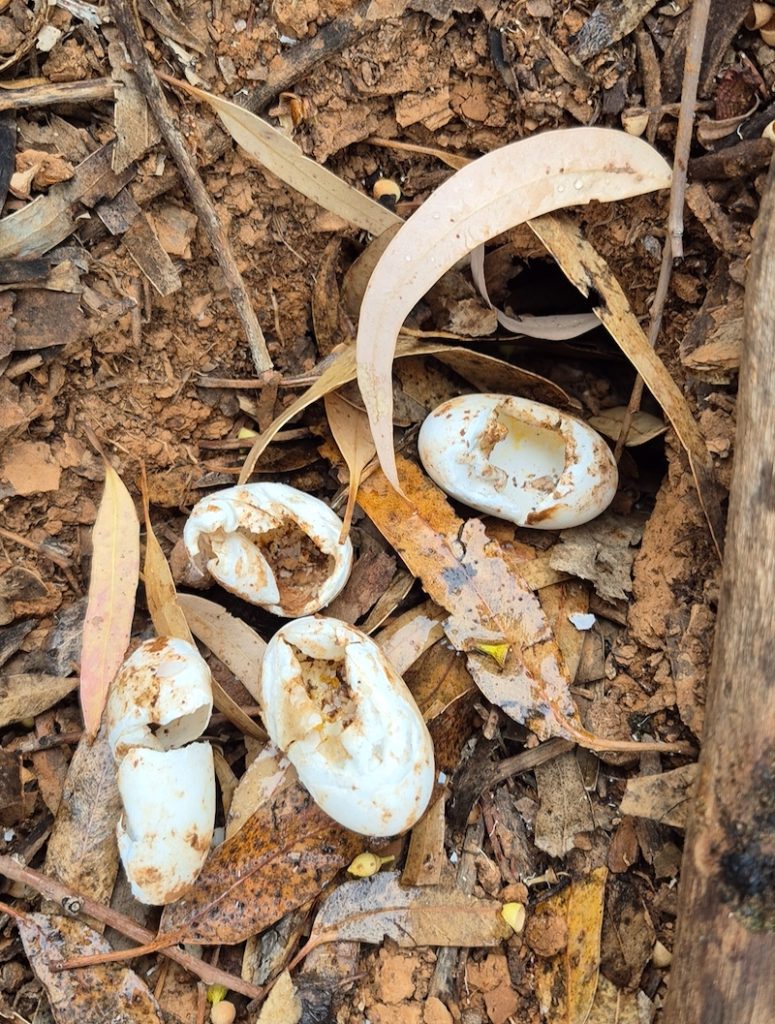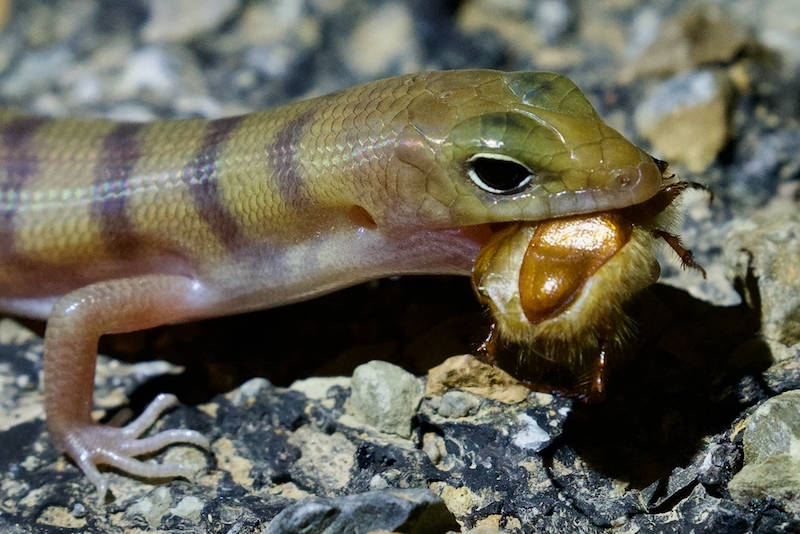Juvenile Eastern Bearded Dragon (Pogona barbata). This species of dragon can have distinctive underside markings from the tip of the snout to the tail.


Juvenile Eastern Bearded Dragon (Pogona barbata). This species of dragon can have distinctive underside markings from the tip of the snout to the tail.


Female Red-barred Dragon (Ctenophorus vadnappa) at Chambers Gorge, North Flinders Ranges, in November.

Desert Tree Frog (Litoria Rubella) in Copley, North Flinders Ranges, in November.

The introduced Murray River Turtles of Aroona Sanctuary dig a shallow hole above the banks of the Aroona Dam to house their eggs. In early November, they were seen in the act of digging nests. There were many other nests at the site, by which time, several were opened with egg shell remains. Incubation can take up to three months, or even the entire summer, with hatching happening after the rains of late summer or autumn. The opened eggs may have been preyed upon by native or introduced predators.



The sand coloured Broad-banded Sand-swimmer Skink has a protective disc over the eye to enable it to burrow through sand while maintaining vision. It is less tolerant of heat than other desert reptiles and is adapted to living underground where it keeps cool and evades predators. It comes out to feed at night, relying on ambient and ground warmth to regulate its temperature.


Eyre Basin Beaked Gecko (Rhynchoedura eyrensis) spotted at night in the Copley area in October. Found on sandy, rocky plains typical of the Strzelecki Track, and known to inhabit insect and spider burrows.


Bynoe’s Gecko (Heteronotia binoei) seen at night in the Copley area, Flinders Ranges.


Gibber Gecko (Lucasium byrnei) seen at night in the Copley area, Flinders Ranges.


Southern Spiny-tailed Geckos (Strophurus intermedius) spotlighted on road at 10:30pm in the Leigh Creek area.
